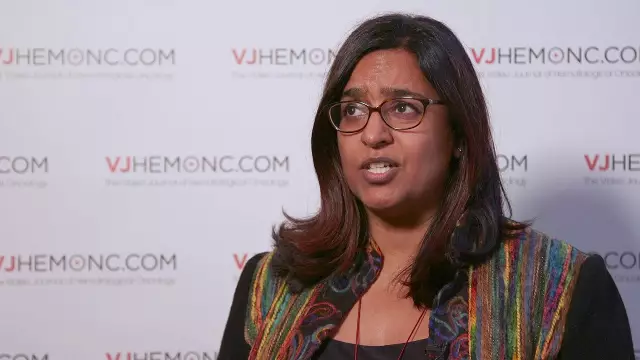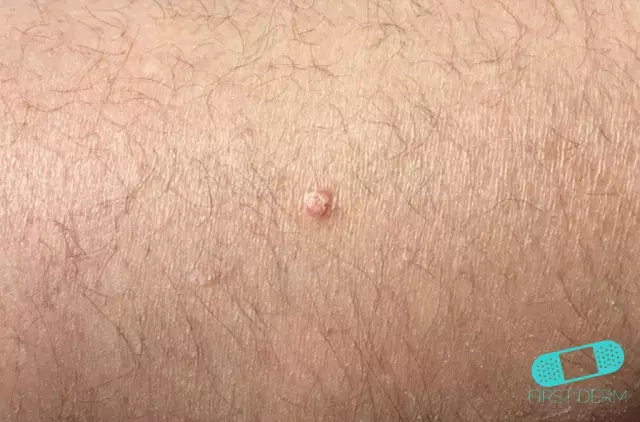- Author Rachel Wainwright [email protected].
- Public 2023-12-15 07:39.
- Last modified 2025-11-02 20:14.
Alalia
The content of the article:
- Causes
- Forms
- Alalia symptoms
- Diagnostics
- Alalia treatment
- Prevention
- Effects
Alalia (from other Greek ἀ - negative particle and λαλιά - speech) - absence or severe systemic underdevelopment of speech in children caused by organic lesions of cortical speech centers during fetal development or in the first three years of life. Unlike aphasia, which presupposes the loss of previously formed speech skills, with alalia there is initially no speech or the speech function is sharply limited. In speech therapy practice, this pathology corresponds to the diagnosis "general speech underdevelopment."

Alalia is characterized by a child's lack of speech without any physical or mental disabilities.
Alalia is diagnosed annually in 1% of preschoolers, and it occurs in boys about twice as often as in girls. Thanks to qualified speech therapy assistance, the prevalence of alalia in children among primary schoolchildren is reduced to 0.2-0.6%.
Causes
In the light of modern concepts, alalia is considered as a consequence of organic damage to the speech zones of the cerebral cortex, which inhibits the development of young nerve cells at the neuroblast stage. Due to insufficient functional maturity, neurons in pathologically altered areas of the brain are characterized by low excitability and rapid exhaustion, which leads to inertia of nervous processes. The bilateral multiple nature of lesions of the cerebral cortex with alalia limits the compensatory possibilities of speech development.
Damage to the speech centers of the brain is provoked by various factors. In the antenatal period, intrauterine infections, fetal hypoxia, gestosis, trauma and chronic diseases of a pregnant woman are of primary importance.

Alalia occurs as a result of organic damage to the speech areas of the cerebral cortex
Complicated pregnancy with a threat of miscarriage and pathological childbirth increase the risk of underdevelopment of the speech centers and the brain as a whole. In particular, a positive correlation was found between intracranial birth trauma and newborn asphyxia, premature, rapid and protracted labor, especially in cases where obstetric instruments were used. Quite often, alalia in children is accompanied by a number of other neuropathies, indicating the development of minimal brain dysfunction.
In addition, alalia can be a consequence of traumatic brain injury, meningitis or encephalitis, as well as other diseases occurring against the background of depletion of the central nervous system. Frequent colds, metabolic disorders, operations under general anesthesia, an unfavorable social environment, a lack of speech contact with significant adults and a hereditary predisposition aggravate the course of alalia.
Forms
In domestic speech therapy, the classification of alali according to V. A. Kovshikov is adopted, according to which motor and sensory forms of speech impairment are distinguished. In the WHO classification, the motor form of alalia corresponds to the expressive form, the sensory form to the impressive one.
The sensory form of alalia, which occurs against the background of the defeat of the speech-auditory analyzer - Wernicke's center and its pathways, deprives the child of the ability to understand speech, since the functions of analysis and synthesis of sounds and the formation of connections between the sound image of a word and its meaning are disrupted.
The motor form of alalia has a more favorable prognosis for the development of the baby, since the speech-motor structures are damaged, as a result of which the child, even in the absence of his own speech, has an understanding of the speech of others. Depending on the localization of pathological changes, two subspecies of motor alalia are distinguished - afferent and efferent. In the first case, the inferior parietal regions of the left hemisphere are affected, as a result of which the reproduction of sounds suffers while the ability to articulate is preserved. Children find it difficult to distinguish controversial sounds, which is why speech is replete with substitutions and displacements of phonemes.
With efferent motor alalia, the Broca's center, which is responsible for articulation, is damaged, which makes it difficult for the child to perform articulatory movements. Outwardly, this is expressed by a distortion of the syllabic structure of words, up to stuttering. Due to the close connection of the speech-motor and speech-auditory analyzers, a mixed form of alalia often develops, in which sensory and motor symptoms are simultaneously observed with a predominance of one or another component.
Alalia symptoms
The first sign of alalia is a strong delay in the child's speech reactions compared to the age norm. Phrasal speech in alalik children can appear only by the age of four, while healthy children use coherent sentences from 2.5-3 years. In advanced cases, children do not speak until 8-12 years old.
Starting from 2-3 years, later symptoms of alalia become noticeable:
- incorrect pronunciation of sounds;
- sound substitutions and phoneme offsets;
- violation of the syllable structure of words;
- poor vocabulary;
- violation of the grammatical structure of phrases;
- lack of semantic coherence of sentences;
- active use of facial expressions and gestures;
- disorders of attention and emotional-volitional sphere;
- hyperactivity or lethargy.

Alalia is characterized by incorrect pronunciation of sounds, scarcity of vocabulary
In addition to the general symptoms of alalia, there are specific manifestations associated with damage to certain brain structures. In particular, sensory alalia is characterized by a rather high speech activity of children with a pronounced paucity of the semantic component. Unmotivated repetitions alternate with omissions of individual sounds and syllables; the child can combine parts of different words. Children can clearly pronounce and repeat individual words and sounds after adults, but there is no internal logic and meaning in their own statements. Sometimes the lack of phonemic hearing is compensated for by lip-reading skills.
Some children manage to master the contextual meaning of some phrases, but when the order of words, the rate of speech, or even individual word forms change, the understanding of the statement disappears. Sensory alaliki are not able to critically comprehend their speech behavior and, in general, have a low ability for self-control; many of them are characterized by impulsivity, disorganization and attention deficit.
Motor alalia manifests itself differently: due to the difficulty of mastering an active vocabulary and grammatical structures, speech reactions are greatly simplified. Children try to avoid complex structures and subtle articulatory differentiations; they have difficulty distinguishing and forming word forms. The lexicon is dominated by nouns used mainly in the nominative case, and in the most severe cases the child is limited to onomatopoeia and babbling.
At the stage of development of phrasal speech, motor alaliks prefer simple sentences. A complex relationship with grammar limits the ability to communicate events sequentially, understand causality, and prioritize. In addition, motor alalia in children is accompanied by neurological and psychological manifestations, which include:
- movement disorders;
- awkwardness and discoordination of movements;
- insufficient development of fine motor skills;
- hearing and speech memory disorders;
- speech negativism;
- increased fatigue.
Diagnostics
Alalia should be differentiated with dysarthria, delayed speech development, oligophrenia and autism. Consultation of several specialists is required: a neurologist, a child psychologist and a speech therapist. An assessment of the volume of auditory-speech memory and complex diagnostics of speech functions are mandatory. During the examination, the speech therapist pays attention to the development of phonetic-phonemic processes and articulatory motor skills, the lexical-grammatical structure of speech, the correspondence of the level of development of expressive and impressive speech to the age norm.

Diagnostics of alalia is carried out by a speech therapist, neurologist and child psychologist
To determine the nature and degree of damage to the speech centers, instrumental studies of the central nervous system are prescribed:
- MRI of the brain;
- echoencephalography;
- electroencephalography;
- X-ray of the skull.
With sensory alalia, in order to exclude hearing loss, an examination by an otolaryngologist with otoscopy, audiometry and other functional studies of the hearing aid will also be required.
Alalia treatment
The systemic nature of the pathology presupposes an integrated approach to the correction of alalia, which includes medical, psychological and pedagogical measures that accelerate the maturation of brain structures. Speech training is accompanied by drug therapy and physiotherapy procedures such as transcranial electrical stimulation, magnetotherapy, electrophoresis, laser therapy, hydrotherapy, etc.
Speech therapy treatment of alalia involves working not only with speech, but also with mental functions - memory, representation, concentration. With the motor form, attention is paid to the correct articulation of sounds, the expansion of vocabulary, the development of phrasal and coherent speech, the development of grammar and stimulation of speech activity; a good effect is given by speech therapy massage and logo rhythmics.

Physiotherapeutic techniques are actively used to treat alalia.
With sensory alalia, classes with a speech therapist focus on distinguishing between speech and non-speech sounds, developing word recognition skills and forming connections between the sound image of a word and specific objects, phenomena and actions. As phonemic hearing develops, exercises are added to enrich vocabulary, master grammar, improve understanding of phrases and train your own speech.
The necessary assistance to children with speech disorders is provided in specialized preschool institutions and correctional centers.
Prevention
To prevent alalia, it is important to take care of creating favorable conditions for the development of the fetus and preventing complications of pregnancy and childbirth. The expectant mother should be under constant dispensary supervision and conscientiously follow all the recommendations of doctors, if possible avoiding the influence of damaging factors - injuries, infections, stress, overwork, etc. In the pre-speech period, close contact of the child with the mother and other family members becomes important: sounds human speech contribute to the early speech development of the baby.
Effects
In the absence of corrective work, sensory and sensorimotor alalia can lead to secondary intellectual disability. With motor alalia, mental retardation is rare, but there is a risk of dysgraphia and dyslexia in school. In order to avoid irreparable consequences for the speech and mental development of the child, it is recommended to start treatment as early as possible: the best effect of therapy is achieved at a younger and middle preschool age.
YouTube video related to the article:

Anna Kozlova Medical journalist About the author
Education: Rostov State Medical University, specialty "General Medicine".
The information is generalized and provided for informational purposes only. At the first sign of illness, see your doctor. Self-medication is hazardous to health!






